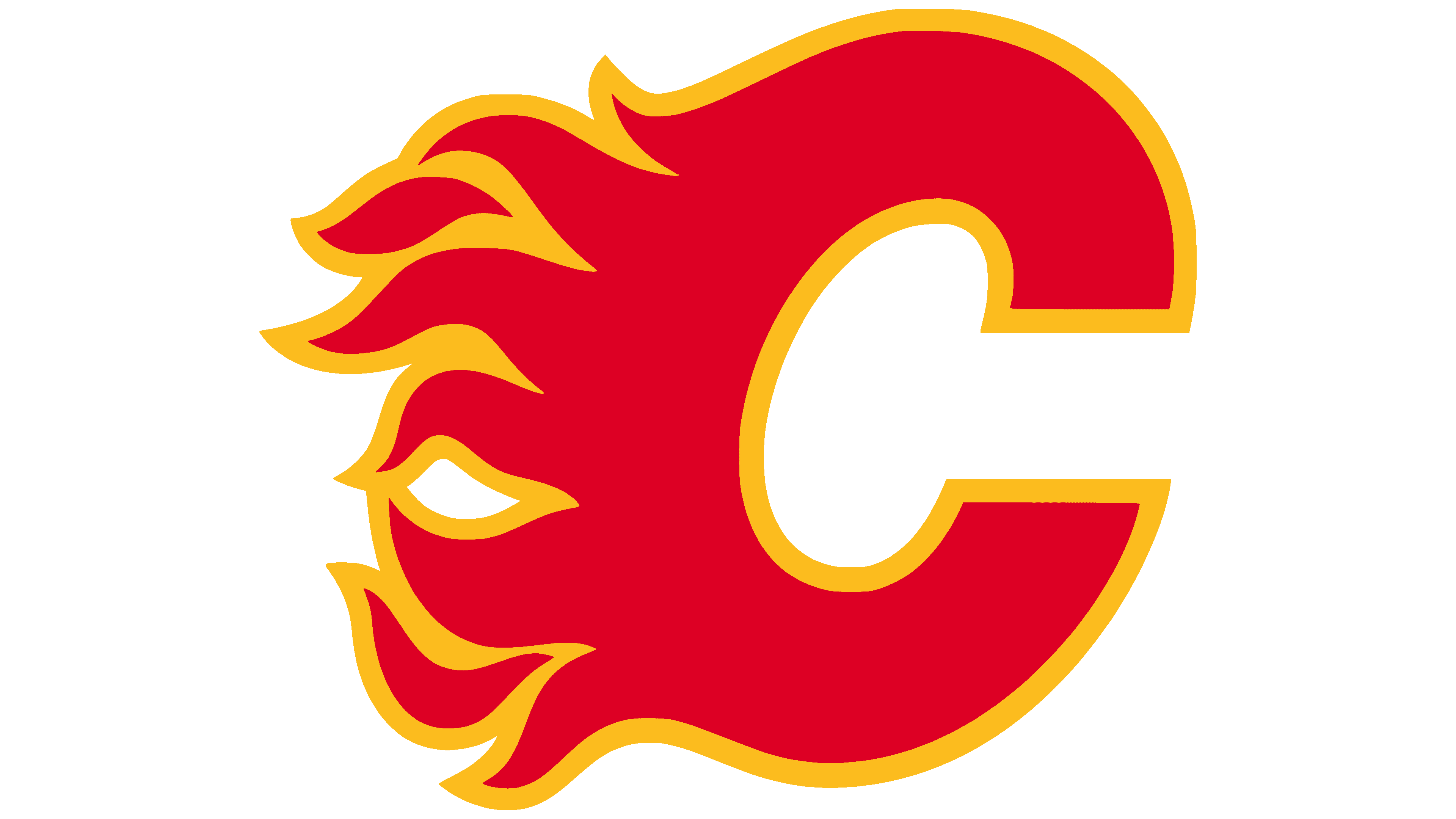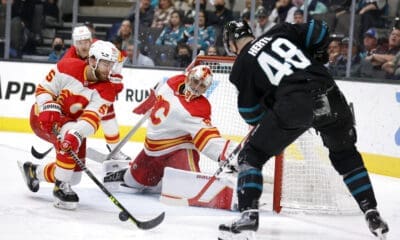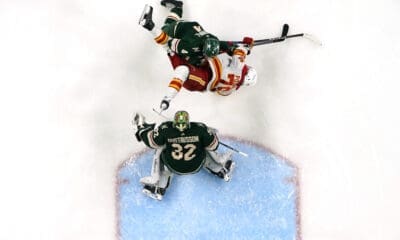Calgary Flames
Restricted free agent contracts, the salary cap, and how these affect the Calgary Flames’ future
The Flames have a lot of cap space; that is, until restricted free agents come into play. Money disappears quickly, and smart spending is absolutely crucial if this team wants to become a Stanley Cup contender.

The Calgary Flames are in one of the best positions an NHL team can be in heading into free agency: they are absolutely swimming in cap space. According to General Fanager, they have the fourth most cap space of any team, with $22,145,434 free to spend.
That's without taking into account the salary cap going up. Thanks to the ever-declining loonie, it probably won't go up by much, but the Flames may be able to spend an extra million or two.
Of course, Calgary shouldn’t become a cap team. Not yet. Not with extensions to Sean Monahan, Johnny Gaudreau, Jiri Hudler, and Mark Giordano right around the corner.
But let’s not think about that just yet. After all, barring trades, there will be some pretty hefty contracts (David Jones, Mason Raymond, Dennis Wideman, Ladislav Smid, Deryk Engelland, Jonas Hiller) coming off the books at the same time, or soon after. Everything will eventually work itself out. After all, the Flames are in great position to make sure they don’t find themselves in cap hell.
Instead, let's focus on just how much the Flames will really have to spend in this year's free agency.
The six RFAs getting re-signed
The Flames don't have to immediately re-sign their restricted free agents. They can qualify them, leave them be for a bit, sign unrestricted free agents, and then come back later. But just because they're signed later doesn't mean that money is going to count for any less. A portion of their cap space has to be blocked off for these guys.
The Flames have 15 restricted free agents, but not all of them are going to count against the cap. Some will be let go, and some will spend their entire season in the AHL. They aren't of concern to us here.
Let’s operate under the assumption that it’s the six guys who have become NHL regulars (or are about to, and just haven’t made it official yet) who need to be taken into account. Mikael Backlund is the headliner, with Lance Bouma, Paul Byron, and Josh Jooris backing him up. After those four, we’re still waiting on Micheal Ferland and Drew Shore to officially make it, but they’re good enough now to be parts of the conversation.
That’s half a forward lineup to take into consideration. There are nine other guys – the aforementioned Monahan, Gaudreau, Hudler, Jones, and Raymond, plus Matt Stajan, Joe Colborne, Brandon Bollig, and Sam Bennett – to take into account. Obviously, not all of these guys will be lineup regulars, and some will be healthy scratches, and there will be injuries, but that’s the general group we’re looking at before free agency.
That half a lineup averages to be almost 25 years old. There are two 25-year-olds on the Flames who don’t require new contracts: Joe Colborne and TJ Brodie.
The Colborne group
Most of the Flames' restricted free agents fall into this category. Colborne is on his third NHL contract, coming off of a standard entry level deal and a one-year, $600,000 follow up for his rookie season. Over the course of his rookie year with the Flames, he scored 10 goals and 28 points over 80 games, earning him a two-year extension worth an annual average value of $1.275 million.
Colborne was a rookie who only just started to prove himself when he earned that extension: the exact same position Jooris and Ferland are in.
Jooris' entry level contract was a two-year deal worth an annual average value of $925,000. His 12 goals and 24 points over 60 games are definitely enough to warrant him a new contract, and probably one in line with Colborne's: short, small bump in pay, and a deal telling him to go prove himself.
Ferland received a three-year entry deal that came with a $611,666 cap hit. He has yet to prove much at all at the NHL level, but his playoff performance was noteworthy, and did a lot to raise his stock. He, too, is probably looking at a short deal with a small pay raise – probably a cap hit of a little over $1 million – to prove he deserves more.
That's around a little more than two million that could go to two of the Flames' restricted free agents, bringing their current cap space down from $22 million to $20 million.
While Shore isn't a rookie, he fits in with this group as well. He only played 11 NHL games this past season, after all, and averaged just 10:40 in ice time while only putting up three points. His entry level deal carried a cap hit of $900,000, and his followup deal should be similar.
Byron isn't a rookie either, and he certainly looks like an established NHLer, but his playing time has been limited. Since making the Flames, he's only played 104 games for them, scoring just 13 goals and 40 points. Byron is coming off of a one-year, $600,000 "show me" deal, exactly like Colborne's rookie year contract. He didn't score as much as Colborne did, though, but his underlying numbers were much better. That's probably enough to earn a small pay raise, but still a short-term deal.
Let's budget about $4 or $5 million off for these four, dropping the Flames' cap space to about $17 or $18 million.
The Brodie group
Here's where things get costly. After his entry-level deal and a two-year bridge contract, Brodie proved he was worthy of a lot more, and earned himself a five-year deal worth an annual average value of roughly $4.65 million. That's still an absolute steal of a deal for a player of his caliber, but it's a significant pay increase from the $2.125 million cap hit he had prior.
After a career year, Bouma now falls into this group, although he probably shouldn't. There's absolutely no reason to believe he's capable of replicating this past year's performance. He never scored this much in junior, and his 15.4% shooting percentage is likely to fall back to earth. He spent half the season in the top six, a place he's never really been before.
The Flames need to be incredibly careful in regards to Bouma's contract, and not get blinded by the one good year he's had versus his several years of fourth liner-level play. We're already down to about $17 million after re-signing four restricted free agents on the cheap.
One year ago, Bouma was re-signed to a one-year, $775,000 "show me" deal. He deserves a pay increase, but not a drastic one, and no long term. Basically, he needs to show the Flames again. Anything more than $2 million is way, way too much at present time. After all, teams don't get into cap hell by paying good players: they get into cap hell by overestimating the abilities of weaker guys, leaving them unable to sign players worthy of higher salaries. If the Flames aren't careful, they could fall into this very trap with Bouma's next deal.
That leaves just Backlund, the king of the Flames' restricted free agent class. With nearly 300 games, he has the most NHL experience. With 51 goals and 128 points, he has the most offence. And with consistently excellent underlying numbers, he has the most value.
Backlund has never cost much, but that's about to change. His expiring contract was a two-year, $1.5 million annual average value "show me" deal. He scored 28 goals and 66 points over 128 games, good for just over half a point per game. He's capable offensively and outstanding defensively. He's more likely to receive something along the lines of Brodie's contract, and by this point, it's more than earned.
That’s not to say Backlund is about to cost $4.65 million, but he might. This is the one restricted free agent of the group that deserves term on his new deal – actually, it’d be really smart to sign him for five years or so, like Brodie – and a significant raise. (To put it bluntly: he’s comparable to a young Mike Richards, and that guy earned himself a $5.75 million cap hit. The scoring isn’t quite there, but taking into account points per 60 minutes and possession stats, it’s very, very close.)
Anything around $3 million for Backlund would be a steal. Anything around $4 million would be more realistic. He's almost certainly not going to get as much as Brodie, but we could be looking at $4.5 million or so.
How quickly cap space bleeds dry
When we started, the Flames had $22 million in cap space. Now, assuming more expensive case scenarios, they have $10.5 million or so to spend in free agency.
That's still a lot, but see how quickly that abundance of cap space disappeared? While more will be coming off the books in the near future, a whole lot more will be added, because Monahan and Gaudreau aren't going to be playing for $1 million their entire careers.
In particular, this points to just how careful the Flames need to be with Bouma's next contract. They can't afford to overpay him.
Brandon Prust has a cap hit of $2.5 million. Prust scored all of four goals this past season. The Montreal Canadiens have just under $4 million in cap space. You don’t want to see that happen to the Flames.
It also holds caution for free agency. While it looks like the Flames have a lot to spend, it's never as much as you'd really hope, and Calgary can afford to give out one bigger contract. They could maybe afford two, but that's really startingt o stretch it.
Most of the Flames' cap is currently occupied by bad players. As the kids get older, that'll start to shift, and the good players will be getting paid.
As long as Engelland-esque deals are a thing of the past, the Flames should be just fine.
If big money continues to be chucked at mediocre-at-absolute-best players, they won't be.
by Ari Yanover








